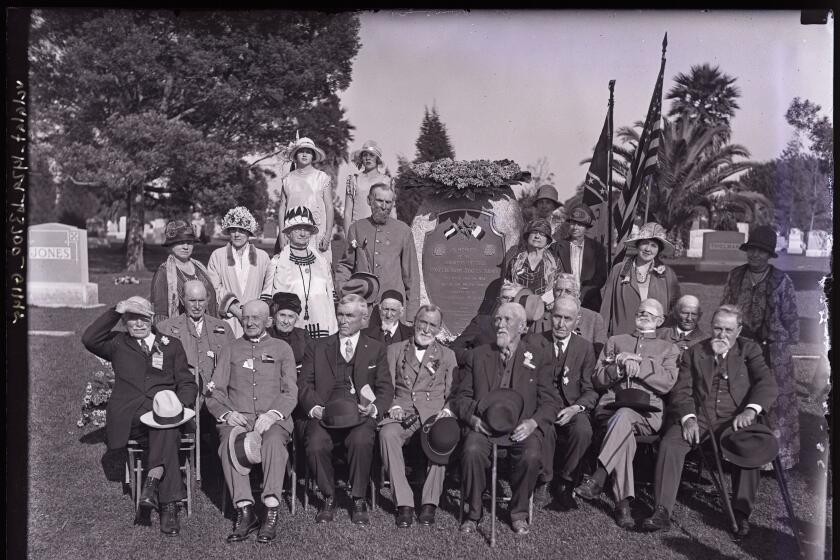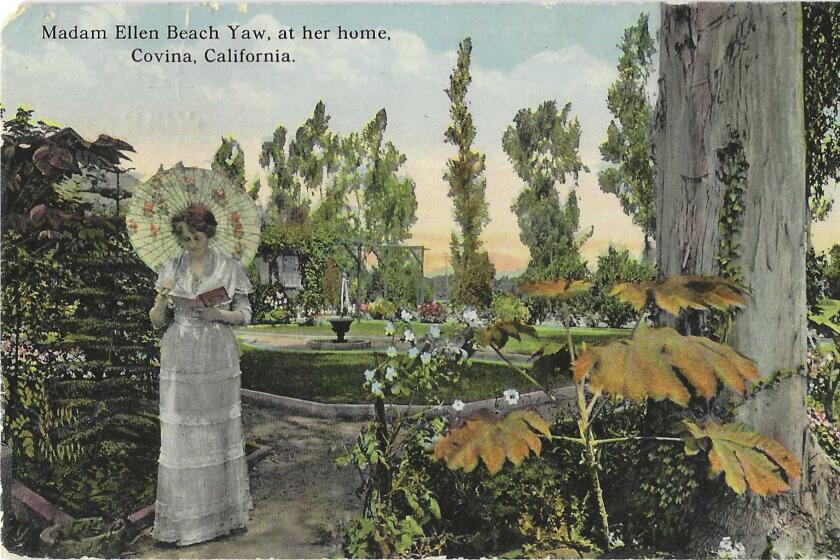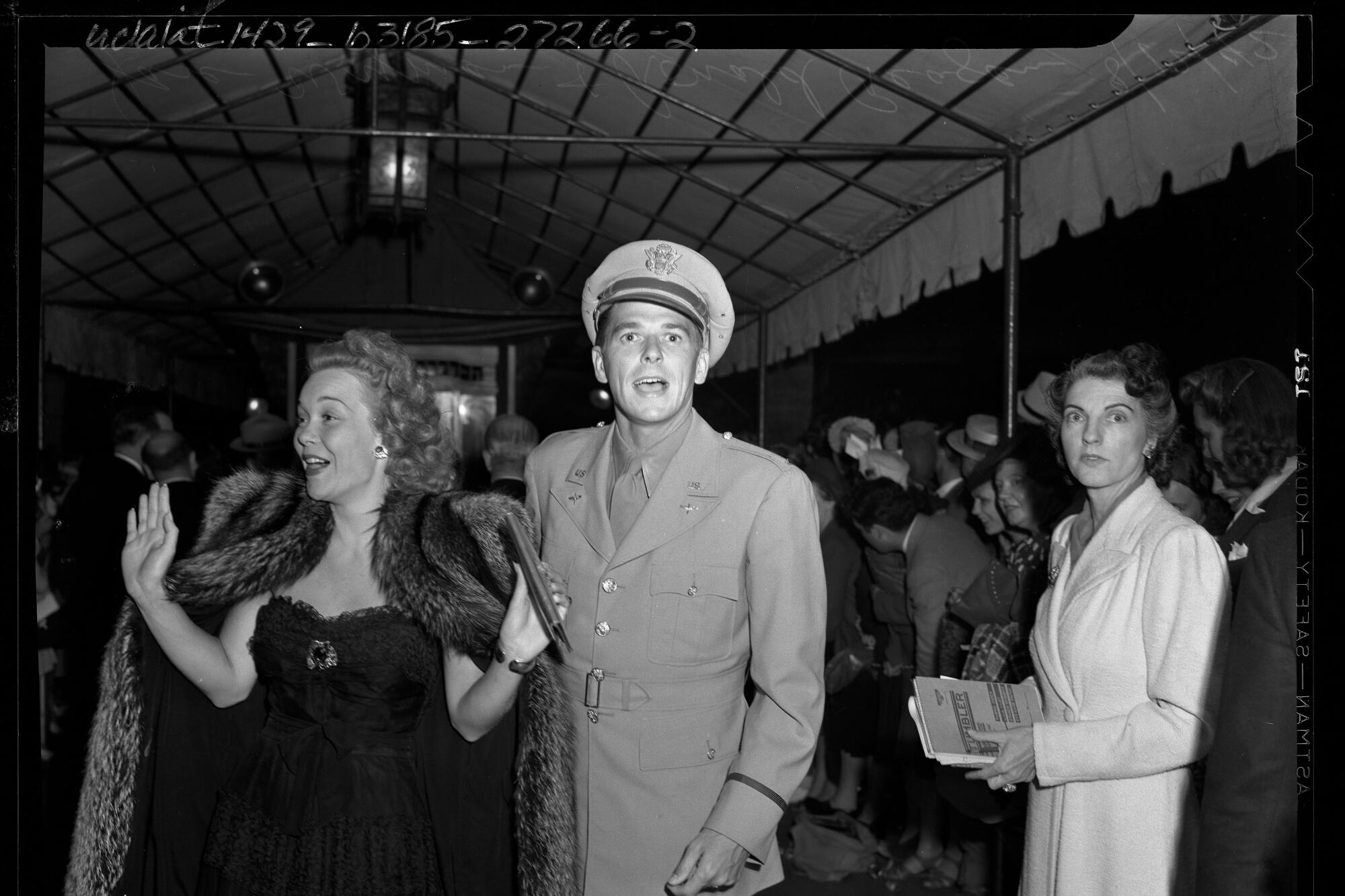
Ugly? You have no idea.
Every nasty little private thing a marriage could churn up, every infidelity, every insult and threat, every drunken episode and squandered paycheck, every crying child — there they all were, spilled out from a witness stand in a courtroom.
Then and only then, after wife or husband had exhausted the litany of the other’s transgressions, could a judge declare them no longer a couple.
And that was the nature of divorce before no-fault divorce laws.
Not every divorce was that emotionally gruesome — not by a long shot — but almost everywhere in the country, a divorce required a wronged spouse, a sinning spouse, and some kind of proof to a legally satisfactory standard. That proof often took sleazy turns, which we’ll get into later.
California, ever the pioneer, was the first state to legalize no-fault divorce in 1969. Other states followed suit — New York, the last, in 2010, about two whole generations later.
Get the latest from Patt Morrison
Los Angeles is a complex place. Luckily, there's someone who can provide context, history and culture.
You may occasionally receive promotional content from the Los Angeles Times.
Thereafter, at-fault divorces could still happen, and they still can. But with no-fault divorces, a couple could split amiably, without accusing or proving anything like bigamy or fraud or abandonment. Under California no-fault law, breakups weren’t even called “divorce” anymore, but “dissolution of marriage.” One becomes two; go in peace.
And now, some conservatives — including House Speaker Mike Johnson — want to end no-fault divorce; they believe it has contributed to making ours what Johnson once called a “completely amoral society.”
Ronald Reagan was governor of California when, a few days after Labor Day 1969, he signed the nation’s first no-fault law. His statement: “I believe it is a step towards removing the acrimony and bitterness between a couple that is harmful not only to their children but also to society as a whole.” Divorce is a “tragic thing,” but the new law will “do much to remove the sideshow elements in many divorce cases.”
Many years before, Reagan had starred in the sideshow. His first wife, actress Jane Wyman, went to court to end their eight-year marriage. She claimed one of the standard grounds for at-fault divorce: an elastic legal term, “extreme mental cruelty.”
Politics came between them, she told the judge — his, as president of the Screen Actors Guild. He’d drag her along to meetings and to conversations with friends about guild politics, but her ideas “were never considered important. ... Finally, there was nothing in common between us, nothing to sustain our marriage.” (Wyman had already served a term on the SAG board of directors.)
The papers took pains to note that Wyman came to court “hatless, her hair in a pageboy bob. She wore a tangerine gabardine shirt-maker dress.”
Court reporters and a reading public were avid for all the dirt on movie star divorces.
In March 1955, 14 hours after he had picked up the best picture Oscar for “On the Waterfront,” producer Sam Spiegel found himself divorced from his actress wife (“blue-tailored dress, ash-blond hair in shoulder-length curls”), who’d accused him of leaving her penniless in Beverly Hills when he’d gone off to make “The African Queen.”
Divorces have historically been hard to get; through the 1600s, the Massachusetts and Connecticut colonies each approved about one divorce per year. In countries where marriage was as much religious as contractual, getting a divorce was an eye-of-the-needle undertaking. And divorce could be monstrously expensive, which put it out of reach of almost everyone.
Even as divorce got easier, the word “easy” was relative.
When Wyman won an Oscar for playing the title character in the movie “Johnny Belinda,” Reagan remarked that “I think I’ll name ‘Johnny Belinda’ as co-respondent.”
“Co-respondent” is a word almost every grown American once knew. It meant the third party in an adultery accusation in divorce court. (Think of Diana, the Princess of Wales, saying, “There were three of us in this marriage.”) When you wanted an at-fault divorce, you had to show specific “grounds,” reasons, and adultery was a common one — sometimes real, and sometimes faked.
The routine was that a husband would be “caught” in a compromising position with some woman, either his actual girlfriend or a woman who’d been paid to go along with the put-up job.
Often, they bedded long enough in a hotel for a room-service waiter or a private detective with a camera to catch them and voila, exhibit A. Usually it was the husband; either he was actually cheating, or he chivalrously volunteered to the charade because men’s reputations were not besmirched by adultery the way women’s were.
The newspapers’ divorce stories of the 1950s were flat-out lurid. The Times reported — with photos of the unhappy couple and the co-respondent — on a woman whose aggrieved husband wanted custody of their little daughters, because his wife took the girls to a San Bernardino motel room where she was staying with another man. In a different case, an Air Force sergeant said his wife was pregnant by another man after they coupled in a parked car, and she in turn complained that he waved guns and knives at her “for purposes of obtaining her concessions and favors.”
Just ... ugh.
A complex mixture of human and geological factors means that this stunningly beautiful peninsula of seaside Southern California homes is also, at times, perilous.
Michael J. Higdon is a professor and associate dean at the University of Tennessee’s law school, and he can go as super-law-nerdy as you like on the topic of divorce laws. He remembers running across a 1934 New York Mirror newspaper headline from at-fault days, “I Was the ‘Unknown Blonde’ in 100 New York Divorces!”
And he shows his students a 1935 Bette Davis tear-jerker called “Dangerous,” about an on-the-skids actress who wants to marry the kind man who restored her to health and talent. She asks her husband for a divorce, but he refuses. So she tries to kill him in a car crash. It only cripples him and, spoiler, she eventually gives up on her kind lover and devotes her life to caring for the husband she couldn’t kill.
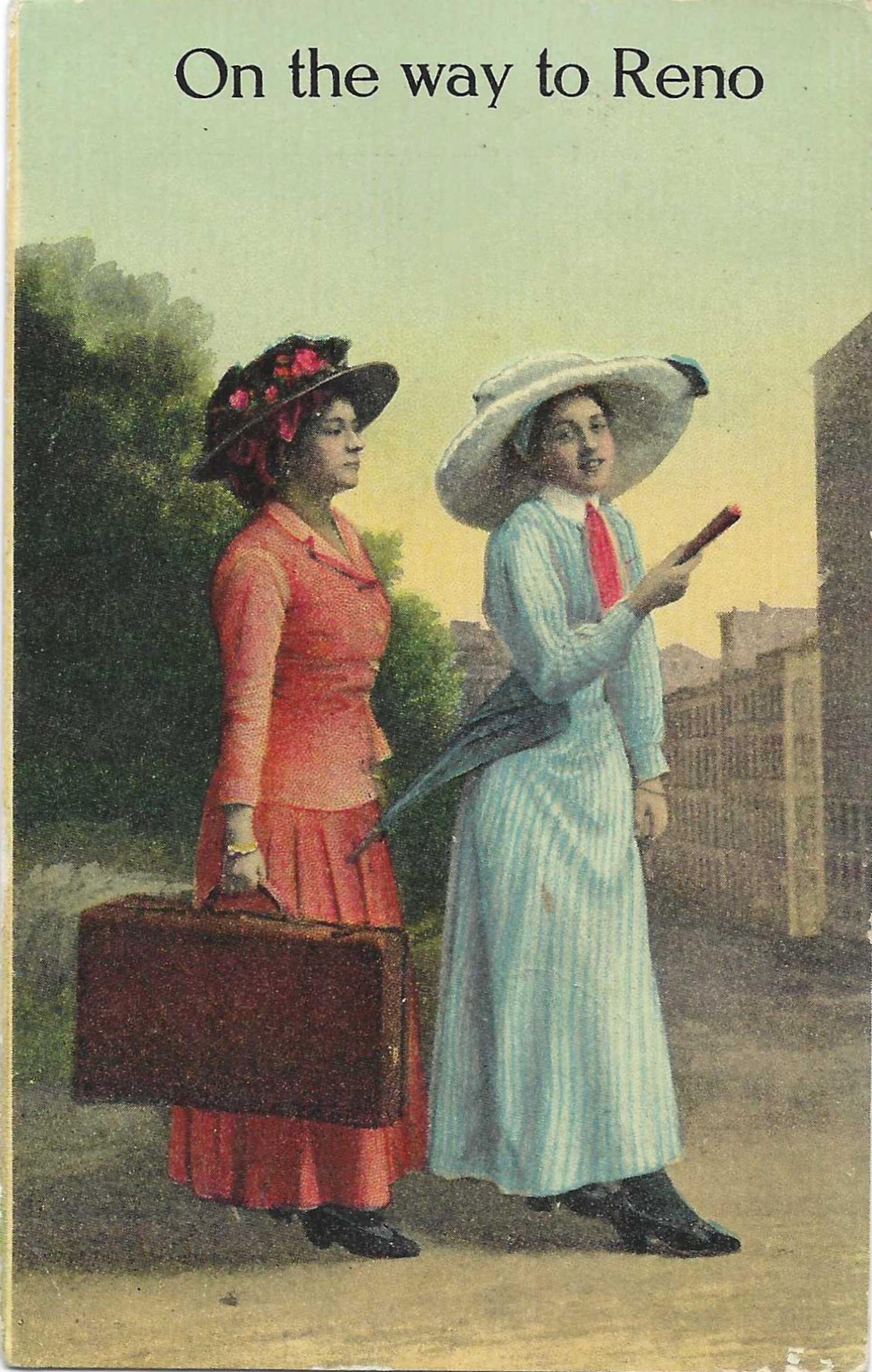
The more I thought about this, the more movies I remembered about at-fault divorce — some comic, like Cary Grant’s “The Awful Truth,” and some dramatic, like “Kramer vs. Kramer.” In the legendary 1939 film “The Women,” New York wives trundle off to Reno, where a six-week residency law lets them divorce their wayward husbands and return home free. (It amused me to read that among the fiercest objectors to California’s no-fault divorce law was Nevada, worried that it would lose its quickie-divorce trade. As matters turned out, it’s made a mint on quickie marriages.)
Higdon can dish the actual facts about what (to the Mike Johnson adherents) looked like the good old days of at-fault divorce, but in fact were not (just ask Bette Davis).
“If you don’t think deeply about what all this means, it could sound good — hey, it’s just too easy to end marriage, and we all agree marriage is a society building block, and we want to make sure people going into it really think about it and commit to it.
“It sounds good, right?” he asks. “The point is, we had that for a long time.”
And for a long time, he says, “we kind of needed it because women had so few rights.”
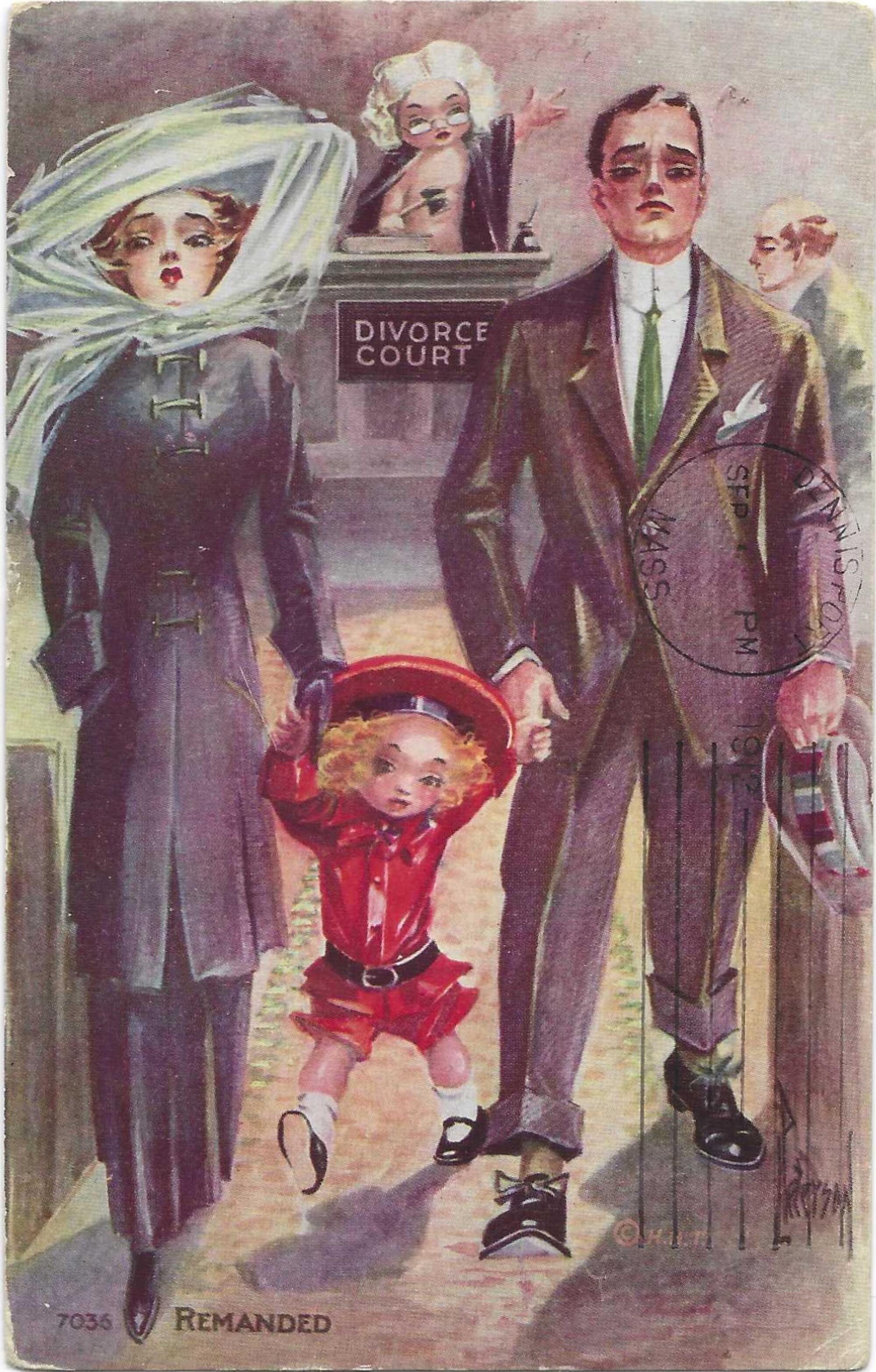
What changed, at about the same time no-fault began, was that a couple of decades of legal and cultural shifts — which many conservatives deplore — began making life different, larger and better for married and unmarried women.
In 1965, the Supreme Court ruled that married couples could legally use contraceptives, in spite of states’ blue-nose “Comstock” laws banning that. In 1972 the right to contraception was extended to unmarried women.
Title IX gave women equal protection from college, workplace and legal discrimination (an unfinished project). And in 1981, the court dumped a law — from Louisiana, Johnson’s home state — that gave a husband “head and master” unilateral control over the couple’s joint property.
A weakness that emerged in no-fault is that fault-based divorces with evidence of abuse or adultery theoretically gave some power to the woman, who was usually the “injured party,” says Higdon. “Often alimony was awarded on the basis of that,” because typically “the economically weaker party is going to be the most harmed by divorce.”
But that was a time when a married woman’s property was often legally her husband’s property. Women were excluded wholesale from many trades, professions and university programs. Women who could get jobs could not — and still don’t — get equal pay to men doing the same jobs. And not until 1974 could women get credit cards on their own, in their own name.
So sometimes a woman’s only leverage in at-fault divorce was her passive power to get compensated for being wronged, and being awarded arguably enough money to support herself and any children, which didn’t always actually turn out that way.
This week marks the anniversary of Robert E. Lee’s surrender near the end of the Civil War. Southern California, part of a free state from its beginning, held profound Confederate sentiment in the 1860s and beyond.
At-fault divorce offered some protection for women at a time when almost every other law did not. (Of course penalties have fallen harder on women caught in adultery. It’s they, and rarely their male partners, who get put to death, historically and even today. And the bar for sexual misbehavior was often lower for women. In Kentucky, Higdon told me, a man could divorce his wife for “lascivious behavior.”)
“The reason we went to no-fault actually supports traditional conservative values,” is what Higdon thinks. “Around the late 1960s, early 1970s, people weren’t getting married as much, because they didn’t have to, because things were changing in society.”
The dwindling stigmas on illegitimacy and on unmarried sexual partners, legal contraception, more laws supporting women’s access to the workplace — things that some conservatives want to reverse — “made at-fault divorce look more and more off-putting.”
“No-fault was a way to get people to marry. If you’re in a marriage, there’s lots of protection. Say at the end of 30 years, it’s better if [couples] were married than not, because with marriage comes property protection. Imagine 30 years with someone, and they drop dead — and you’re not protected. Marriage protects in ways that cohabitation does not.”
And no-fault divorce still offered legal protections to divorcing couples, but without the trauma of “guilty” and “innocent” parties. A judge has only to be satisfied that the couple’s differences were irreconcilable.
She toured the world wowing audiences, and she captured the public’s imagination for decades. No, not Taylor Swift; Ellen Beach Yaw, also known as Lark Ellen.
There’s no end to the debate and studies about who suffers more in a divorce, economically, personally and socially. Men’s rights groups have sprung into existence in the wake of changes in family law. And divorced women may find themselves fighting to get their court-ordered child support, and winding up as principal breadwinner and primary parent.
Yet Time magazine has reported that 70% of divorces are initiated by women, and a 2004 Stanford business school study concluded that while divorce traditionally leaves women worse off than men financially, it delivers women an unexpected and “life-preserving” benefit: In no-fault states, the study found that women’s suicide rates dropped by a startling 20%, and wife-beating fell by as much as 12.8%.
Higdon has looked ahead to the fallout we could be in for if we end no-fault divorce, and he worries that making divorce harder once more will make more people reluctant to get married.
And if people think common-law marriage is a good alternative, think again. First, he says, there’s all kinds of misinformation and urban legend, like, “My mom told me that after prom if me and my boyfriend check into a hotel, then we’re legally married.” Not.
Only eight states recognize common-law marriage, and California is not one of them. And “no state,” says Higdon, “allows common-law divorce. [Society] wants you to go through the court, to make sure no one is getting screwed in the dissolution process.”
Several law websites point out that in many states, an unmarried couple’s children don’t automatically get the same benefits as the children of married couples, like inheritance or child support, and they need paternity agreements or even paternity tests.
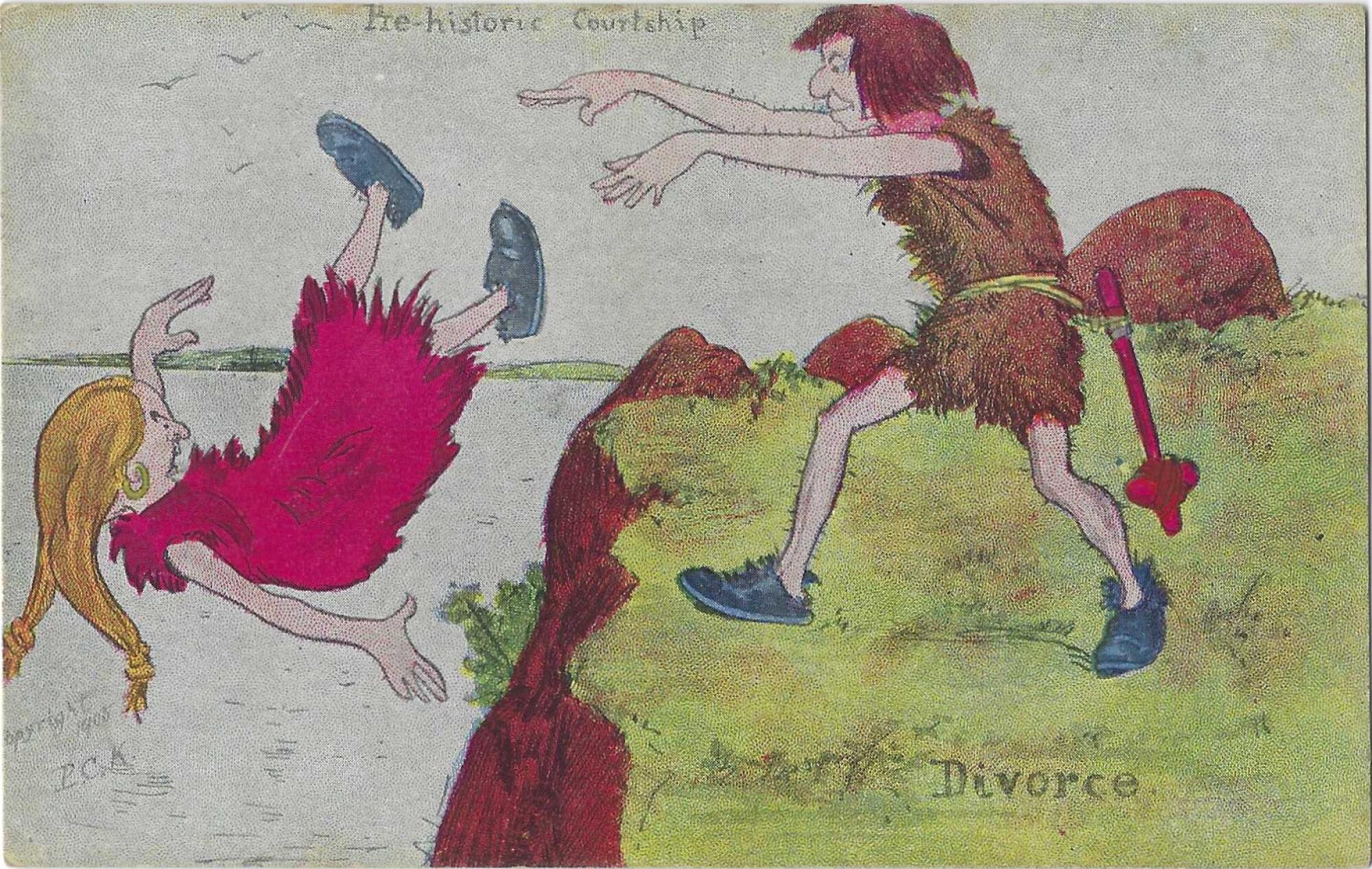
There’s still a grotesque reality television show called “Divorce Court.” It thrives on the rowdy spectacle of real divorcing couples fighting over the same red-meat sins of at-fault divorce — adultery, extravagance, neglect, anger, all with vulgar language and shouting that no real courtroom would tolerate.
It’s the natural grandchild of TV’s original “Divorce Court.” That show premiered in 1957, here on local station KTTV, then owned by the L.A. Times — K-Times-T-V — and those three-hanky episodes were actors’ reenactments of actual divorce cases.
And if you ever go looking for some real deterrents to marriage, just try binge-watching those.
Explaining L.A. With Patt Morrison
Los Angeles is a complex place. In this weekly feature, Patt Morrison is explaining how it works, its history and its culture.
More to Read
Get the latest from Patt Morrison
Los Angeles is a complex place. Luckily, there's someone who can provide context, history and culture.
You may occasionally receive promotional content from the Los Angeles Times.

